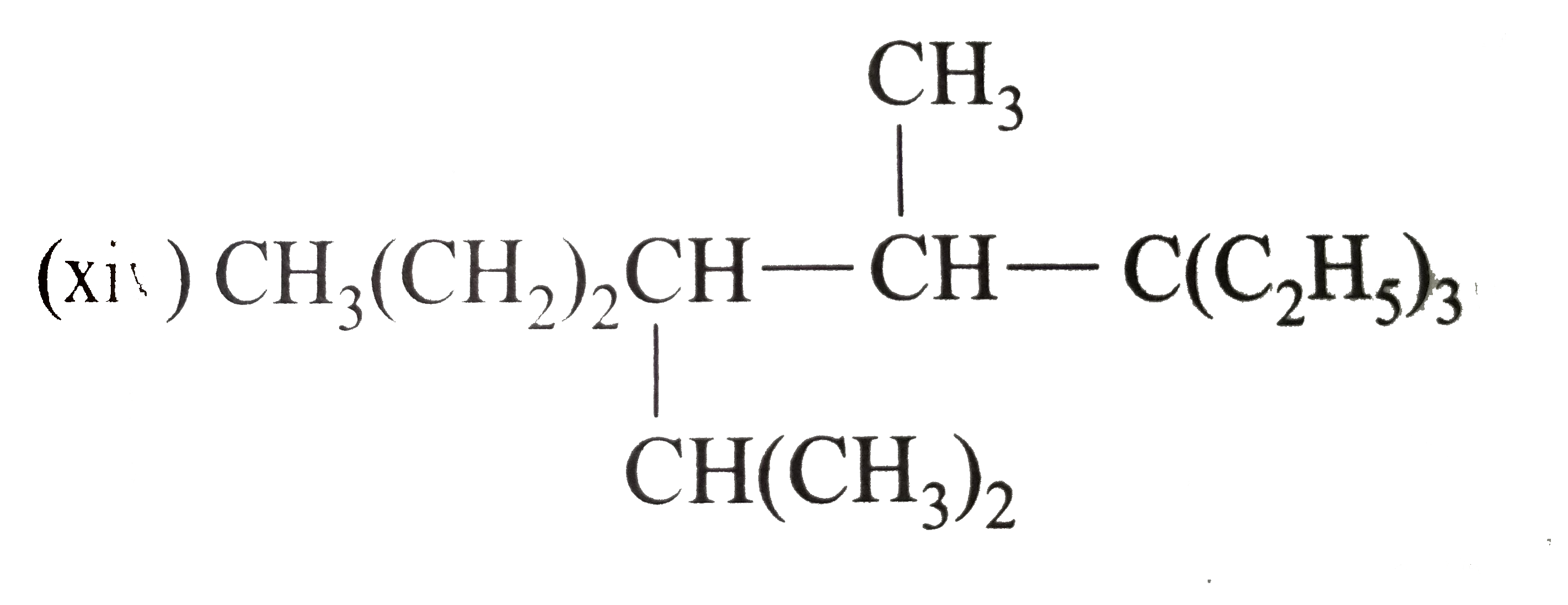Which of the following alkanes can exhibit cis-trans isomerism?
(i) CH2=CHCH2CH3 , (ii) CH2=C(CH3)2
(iii) CH3CH=CHCH3 , (iv) CH3CH2CH=CHCl
(1) (i), (ii)
(2) (ii), (iii)
(3) (iii), (iv)
(4) (i), (iv)
The correct Answer is:C
cis-trans isomersim is not possible is one of the C atoms of the double bond bears identical atoms or groups.
Topper's Solved these Questions
- NOMENCLATURE OF ORGANIC COMPOUNDSBOOK - R SHARMACHAPTER - NOMENCLATURE OF ORGANIC COMPOUNDSEXERCISE - follow up test 3
16 Videos
- NOMENCLATURE OF ORGANIC COMPOUNDSBOOK - R SHARMACHAPTER - NOMENCLATURE OF ORGANIC COMPOUNDSEXERCISE - follow up test 4
37 Videos
- NOMENCLATURE OF ORGANIC COMPOUNDSBOOK - R SHARMACHAPTER - NOMENCLATURE OF ORGANIC COMPOUNDSEXERCISE - Follow up test 1
9 Videos
- ISOMERISMBOOK - R SHARMACHAPTER - ISOMERISMEXERCISE - Archives
11 Videos
- PURIFICATION AND CHARATERIZATION OF ORGANIC COMPOUNDSBOOK - R SHARMACHAPTER - PURIFICATION AND CHARATERIZATION OF ORGANIC COMPOUNDSEXERCISE - Archives
38 Videos
Similar Questions
While of the following compounds will exhibit geometrical (or cis-trans) isomerism?
(i) CH3CH=CHCH2CH3
(ii) C6H5CH=CHCH3
(iii) CH2=C(CH3)2
(CH3)2C=CH−C2H5
Strategy: Essential requirement for any alkene to exhibit geometrical isomerism is that each of the double bonded carbon atoms should be attached to two different atoms or groups of atoms:

m≠nandp≠r. Notice that m and p may be same or different Similarly, nandr may be same or different.
View SolutionWhich of the following compounds will show cis-trans isomerism?
(i) (CH3)2C=CH−C2H5
(ii) CH2=CBr2
(iii) C6H5CH=CH−CH3
CH3CH=CClCH3
View Solution
Knowledge Check
Increasing order of reactivity of the following alkyl halides in the Williamson's synthesis is
I. CH2=CHCH2Cl
II. CH3CH2CH2Br
III. (CH3)3CCH2Br
IV. CH3CH2CH2ClAII<III<IV<IBIII<II<IV<ICIV<III<I<IIDIII<IV<II<IThe compounds CH3CH=CHCH3 and CH3CH2CH=CH2
AAre tautomersBAre position isomersCContain same number of sp3−sp3,sp3−sp2 and sp2−sp2 carbon-carbon bondsDExist together in dynamic equilibrium
Classify the following as alkyl, allyl and vinyl halides
(i) CH2CH=CFCH2CH3
(ii). (CH3)2CClCH3
(iii). CH2=CHCH2I
(iv). .
.
View SolutionWrite the IUPAC names of the following alkanes:
(i) (CH3)2CHCH2CH3
(ii) (CH3)2CH−CH(CH3)2
(iii) (CH3CH2)2CH−CH(CH3)2 ltbr (iv) CH3CH2CH∣CH3CH3CHCHCH3CH∣(CH2)2CH3(CH3)2
(v) (CH3)2CHCH2CHCH3CH(CH3)2
(vi) (CH3)3CCH2C(CH3)2
(vii)
(viii) Isobutane
(ix) Neopentane
(x) Isooctane
(xi)
(xii)
(xiii)
(xiv)
(xv) 4-tert-Butyloctane
Strategy: Open up the structure if brancehes are present. Select the longest possible continous C chain carrying the maximum number of branches as the parent chain. Number the parent chain using the smallest possible number or lowest set of locants for the substituents (s). Assign the name and position number to each and every substituents. Write the name as a single word. Use hyphens to seperate numbers and letters. Do not leave any spaces.
View SolutionWhich of the following compounds will show geometrical isomerism ?
(a) H2C=CBr2 (b)(H3)C)2C=CHCH3 (c)C6H5CH=CHCH3
(d) CH3CH2C∣CH3=CHCH2CH3 (e)H3C−CH=CCl(CH3)
View SolutionArrange the following compounds in increasing order of SN1 reactivity.
(i)ClCH2CH=CHCH2CH3,
CH3C(Cl)=CHCH2CH3,
CH3CH=CHCH2CH2Cl,
CH3CH=CHCH(Cl)CH3
(ii) CH3CH2Br,CH2=CHCH(Br)CH3,
CH2=CHBr,CH3CH(Br)CH3
(iii) (CH3)3CCl,C6H5C(CH3)2Cl,
(CH3)2CHCl,CH3CH2CH2Cl
View SolutionArrange the following in order of increasing boiling point:
(i) CH3CH2CH2CH2Br
(ii) (CH3)3CBr
(iii) (CH3)2CHCH2Br.
View SolutionArrange the basic strength of the following compounds.
(i)CH2=CHCH2NH2
(ii)CH3CH2CH2NH2
(iii)CH≡C−CH2NH2
View Solution
